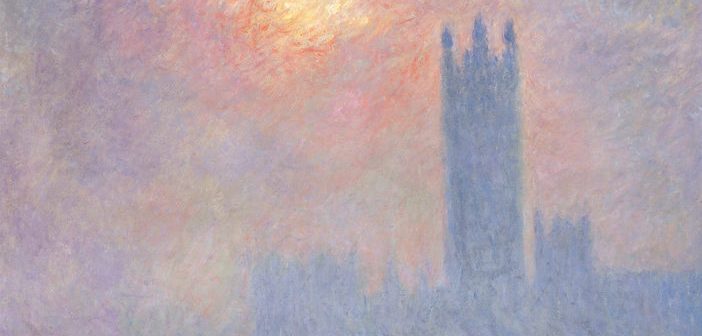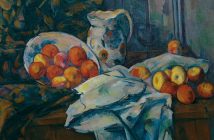During the 1870-1871 Franco-Prussian war in France many people, artists and art dealers included, travelled to England as a refuge. The painter Claude Monet (1840-1926) was amongst the refugees, bringing his wife and young son. Without much money they stayed in an inexpensive hotel in London. It was Monet’s first visit to the city. He spent time in the museums and galleries, admiring the art of J.M.W.Turner and John Constable. He painted too, including a view of the river Thames looking toward the Houses of Parliament.
His good friend, the Danish-French painter Camille Pissarro, was in London at the same time, and they were introduced by another painter Charles Daubigny to Paul Durand-Ruel, a prosperous, well-connected art dealer in Paris. He was in London to set up exhibitions of French artists’ works while war continued in France. Durand-Ruel loved Monet’s and Pissarro’s paintings. He bought two from Monet instantly. It was the beginning of Monet’s path to success.
At the Courtauld Gallery in London, the Griffin Catalyst exhibition ‘Monet and London: Views of the Thames’ focuses on Monet’s art created in the capital. On three occasions, on long stays in 1899, 1900 and 1901, Monet returned to London, to paint. He was wealthy now and stayed at the luxurious Savoy Hotel on the embankment of the river Thames – close to the north side of Waterloo bridge – for about two months on each visit. He booked two apartments with riverside views, one for residing, the other for painting. His focus was the Thames.
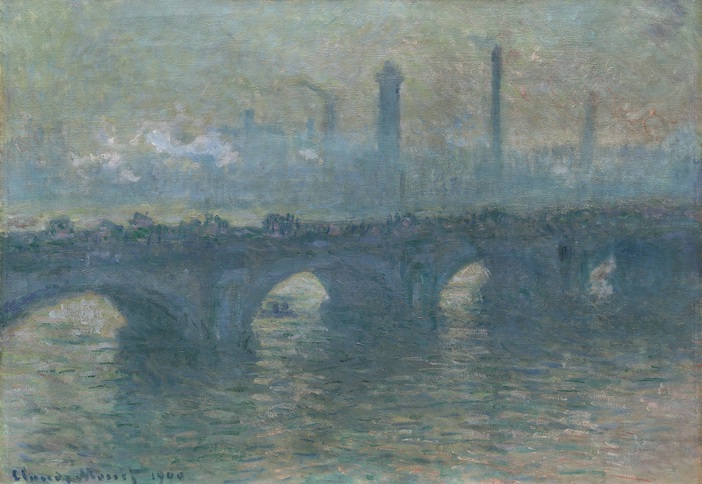
Waterloo Bridge, Gray Weather, 1900, oil on canvas (Art Institute of Chicago / Art Resource, NY/ Scala, Florence)
At the time the Savoy riverside apartments had balconies (now removed). Monet painted what he could see from his balcony, a view of the river flowing easterly downstream toward Waterloo Bridge, and upstream toward Charing Cross Bridge and the Houses of Parliament. Across the river, on the south bank opposite the hotel, was Waterloo station, the steam rising from the trains, and along the bank a multitude of industrial factories belching out smoke, creating a dense fog. It was what he had come for. The chimneys can be seen in the distance in Waterloo Bridge, Overcast (Ordrupgaard, Denmark).
In September 1899 Monet, on his balcony at the Savoy, set up his easel and began to paint. What he was looking for was fog effects. He loved the effet, the effect of smoke and fog on the river, on the clouds in the sky, on the buildings and bridges. It captivated him. At times the fog was so acrid, especially a yellow-sulphurous smog, it was said that animals in nearby Smithfield meat market were near-asphyxiated. The heavy fog was referred to as a pea-souper, making it impossible to see hand in front of face, and the bringer of ill health, too. Monet loved the weather experience, he found it evocative and the city so beautiful. Writing to his wife, Alice, he remarked that “Every day, I find London more beautiful to paint”, to the extent that he was disappointed when the factories shut down on Sundays, a non-working day, with no belching smoke and the streets less populated.
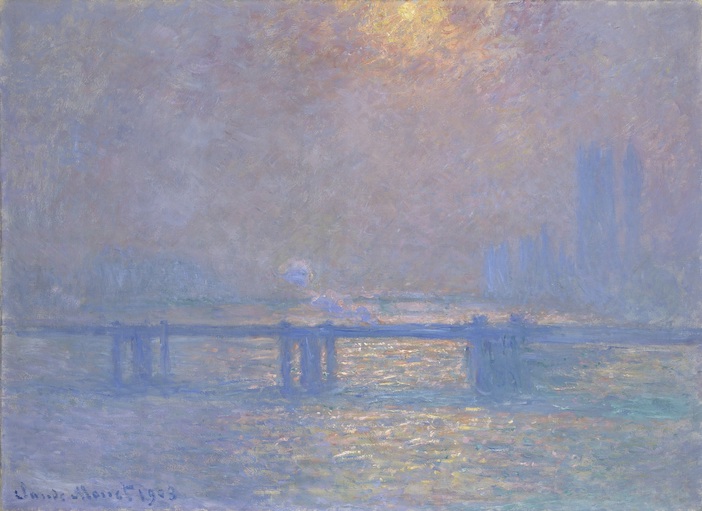
Charing Cross Bridge, the Thames, 1903, oil on canvas (Musee des Beaux-Arts, Lyon, Image © Lyon MBA – Photo Alain Basset)
Monet focused on three sites. In the mornings he painted Waterloo Bridge, to the east; in the afternoon his attention turned to Charing Cross Bridge to the west as in Charing Cross Bridge, The Thames (Musée des Beaux-Arts, Lyon, France). In late afternoon, he left the Savoy hotel to cross the river to St Thomas’s Hospital on the south bank. He had arranged with the director of the hospital to have access to a private terrace on top of the building with a view to the Houses of Parliament. His paintings concentrated on the Victoria Tower, not the ‘Big Ben’ clocktower. He painted the scene in different weathers from the grey foggy skies of Houses of Parliament: Effect of Fog, London (Museum of Fine Arts, St Petersburg, Florida, USA) to the glorious effect of late sun on water in London, The Houses of Parliament, Shaft of Sunlight in the Fog (Musée d’Orsay, Paris, France).
On his private terrace at the hospital he painted the Houses of Parliament on the north bank, the sun slowly sinking, creating a harmonious, atmospheric view of the Gothic Revival buildings. The buildings were not that old, around 62 years when Monet returned in 1899, built 1837-60 but the architectural style was medieval. Monet wanted to capture the effect of evening sun on the buildings and the sky and river. Trying to catch the sense of the cloud movements, smoke haze, fog and sunlight was difficult. Monet would work on several canvas at once, changing over when the cloud formations, or sunlight, or fog changed the scene before him. At times the sun could not be seen until after 10am due to the fogs, and then only glimpsed through a haze. He waited, until he had the effect he wanted, and then painted quickly to capture the moment.
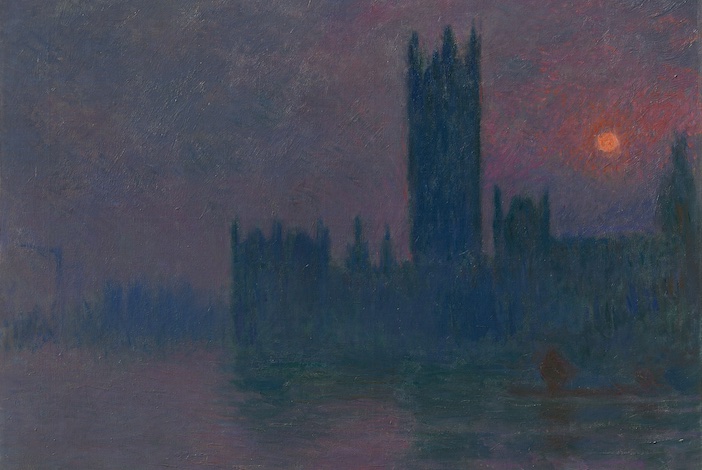
Detail from Houses of Parliament, Sunset, 1900–1903, Oil on canvas (Hasso Plattner Collection)
In total Monet created almost 100 views of Thames while in London. They were preliminary works, completed in his studio at his home in Giverny, France. He chose 37 to be exhibited in ‘Vues de La Tamise à Londres’, in 1904 at Galeries Durand-Ruel in Paris. The majority instantly sold. Views of London were in demand, especially those painted by Monet. It was his intention to hold the same show in London the following year but he needed to paint more canvases, to replace those sold, because buyers did not want to part with their paintings. Ultimately, the project ran out of time.
This year, 120 years on, the Courtauld Gallery, a close 300 metres from the Savoy, where many of the works were created, is exhibiting twenty-one paintings, the majority of which were in the 1904 show. What comes across, seeing the paintings displayed together, is the intensity in each work and how much Monet strived to obtain the exact atmospheric ‘effet’ he wanted. Knowing the background to these works, it simply has to be seen.
The Griffin Catalyst exhibition ‘Monet and London: Views of the Thames’ runs until 19 January 2025) at The Courtauld Gallery, Somerset House, Strand London WC2R. For more information, please visit www.courtauld.ac.uk.
Rosalind Ormiston is author of the forthcoming book Masters of Art: Monet. Prestel Publishing, due to be published Spring 2025.

